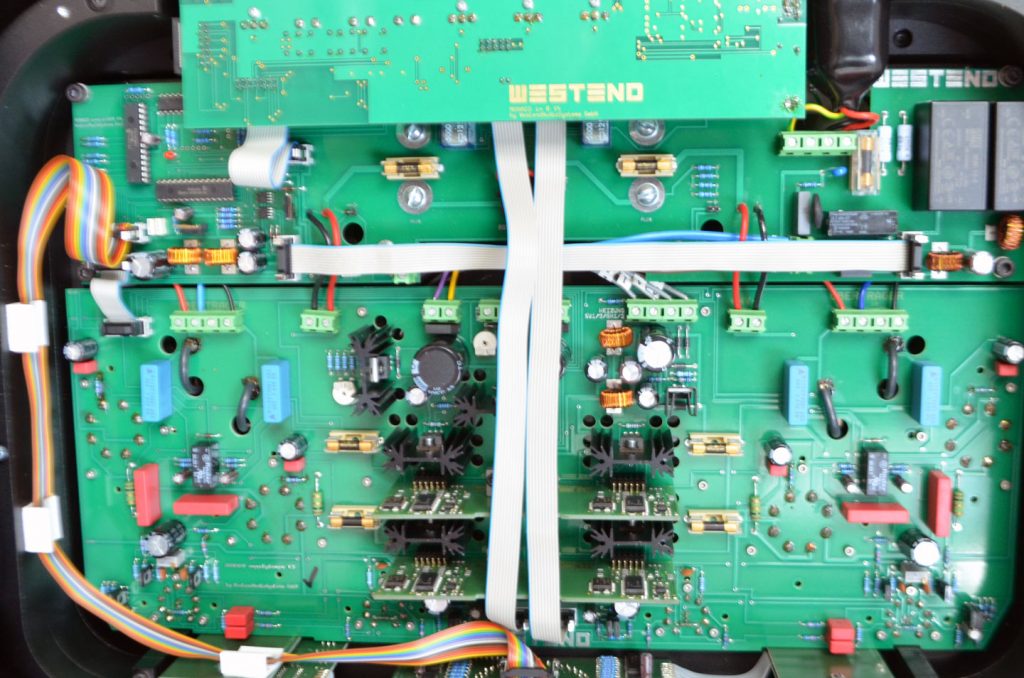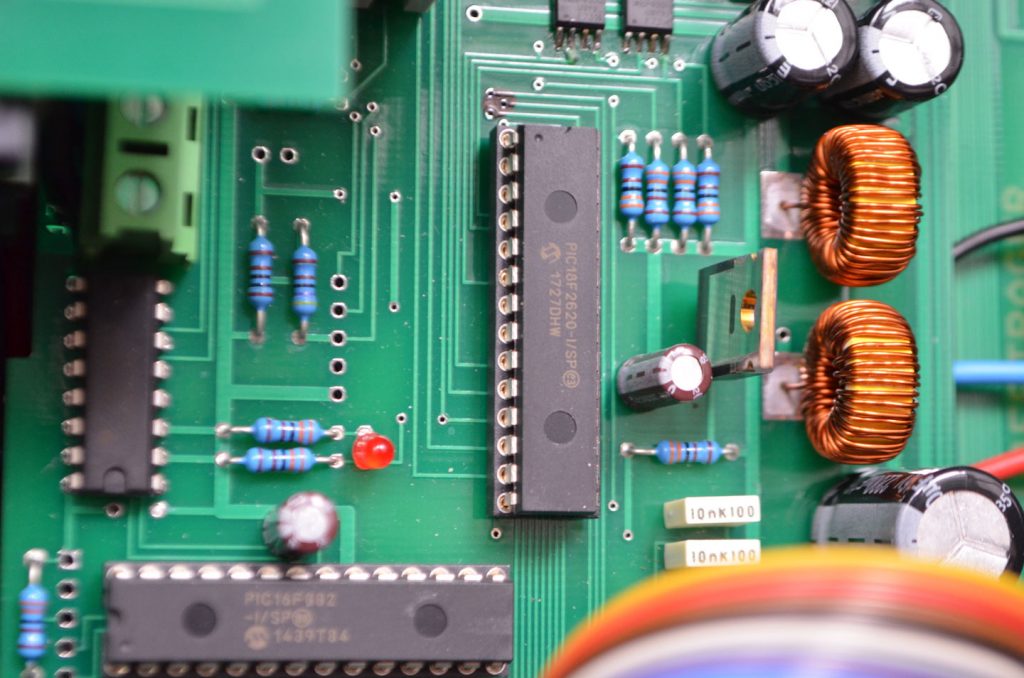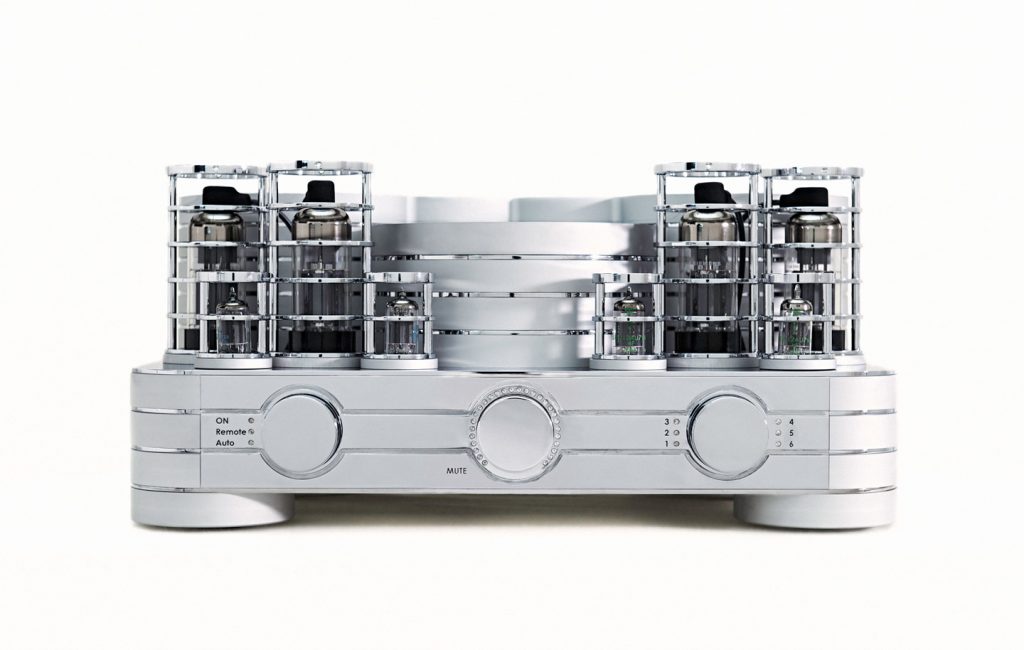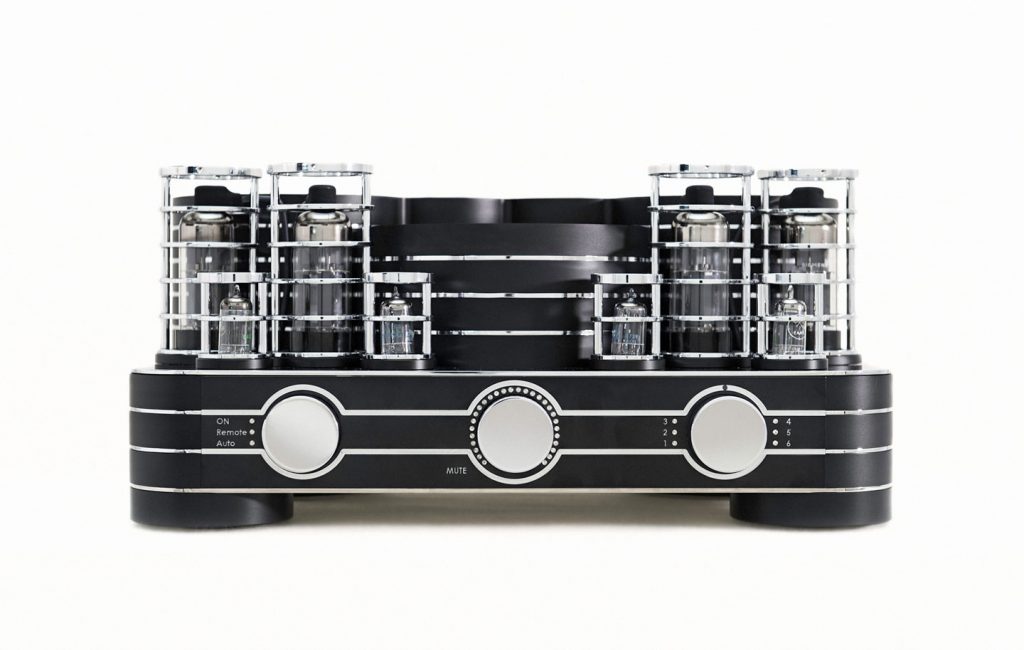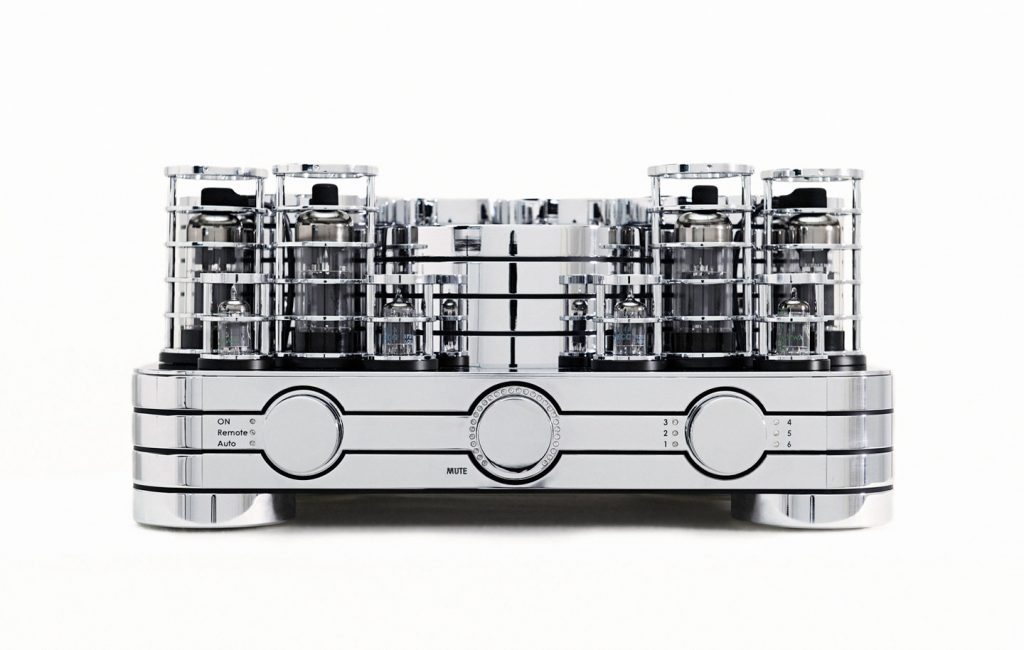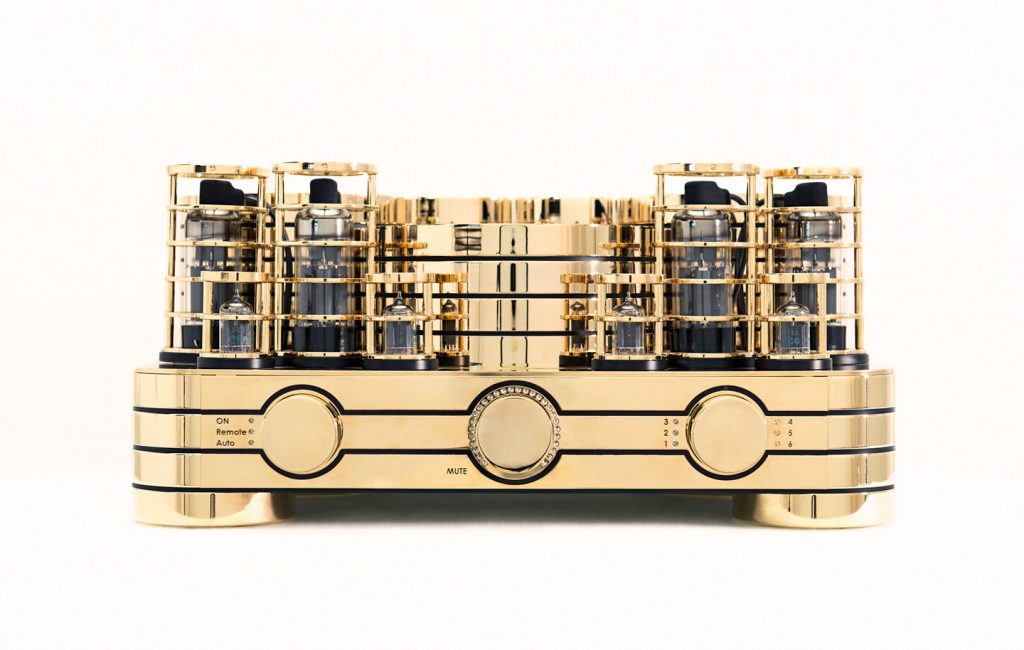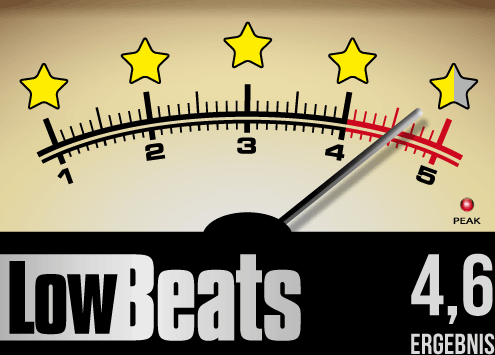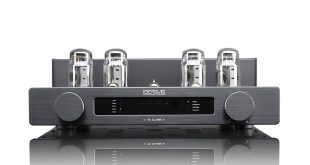Can an integrated amplifier for 20,000 euros excite many HIFi fans? You would think: no. But wrong. The Westend Audio Monaco is currently enjoying an astonishing triumph. Its secret: amazingly precise tube sound plus an individual, perfect surface finish. LowBeats tested the dream amplifier – and probably won’t be giving it back…
The still young history of the Munich high-end manufacturer Westend Audio is also the story of two men who want to know it all over again. One of them, Managing Director Stefan Trog, is the full-time operator of Munich’s most beautiful hi-fi store, the 3rd Dimension. He came to hi-fi via the surface, so to speak: for a long time, he ensured the perfect chrome plating on Burmester and AVM components.
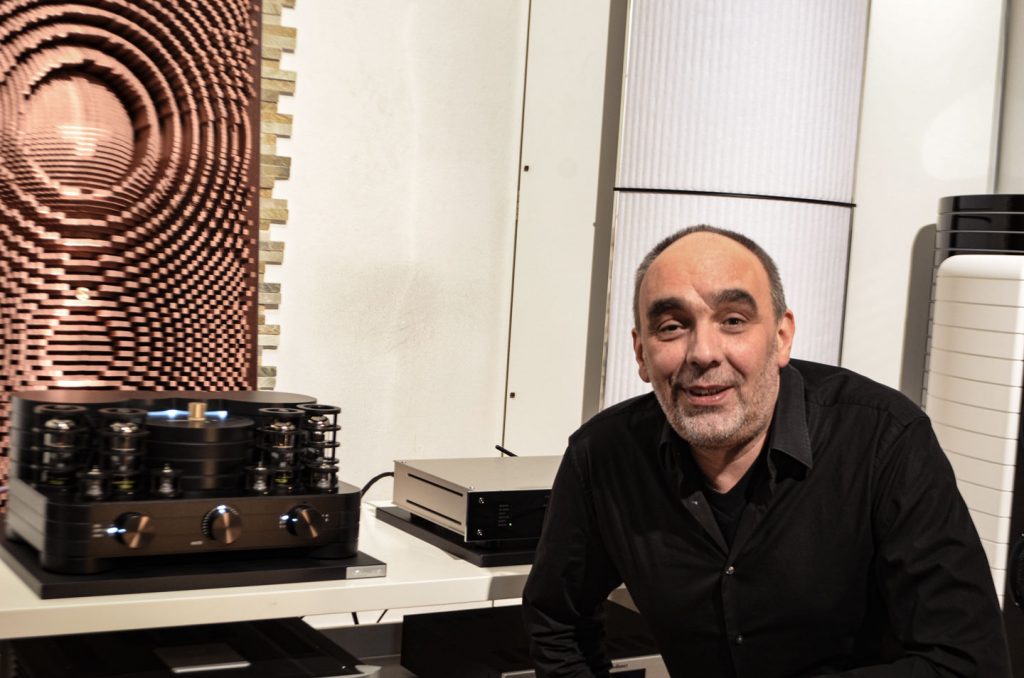
At AVM, Trog got to know the second important man at Westend Audio: the developer Günther Mania. Mania, once founder (and still developer) of AVM, is considered one of the most gifted (transistor) amplifier developers in Germany. But in the meantime, the likeable man from Baden has come round to the tube. Mania: “I used to think that tubes couldn’t sound. I had to be proven wrong. This is partly because the transistor clips hard at its power limit, whereas the clipping of the tubes is much softer. That’s why tube watts counts twice…”
And that also explains this story: At Westend Audio, Stefan Trog can build devices that meet his own standards of perfect workmanship and surface design, and Mania can live out his passion for tubes here. And that’s what he does. Extensive.
The structure of the Westend Audio Monaco
Because just like the small Westend Audio Leo (see test) the Monaco draws its power from the glowing glass bulbs. However, much more than the Leo: The four power tubes of the Monaco work according to the push/pull principle. This gives Mania 100 watts per channel into 4 ohms. And even with low-impedance speakers (such as most large Gauder models) it remains absolutely stable. This is very unusual for a tube amp.
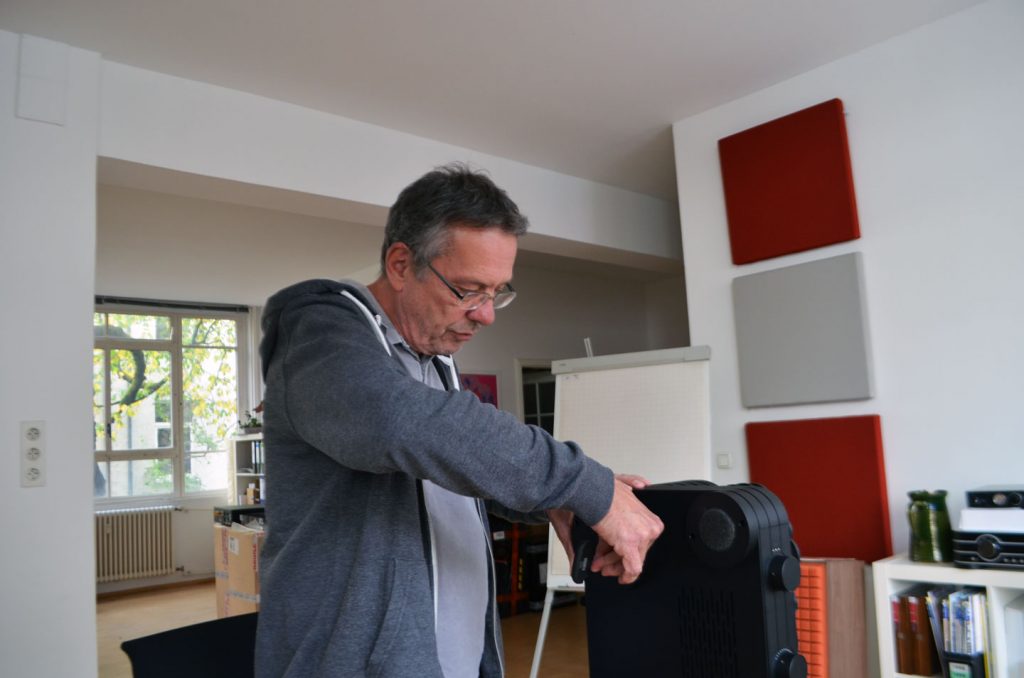
But the Monaco is exceptional in many respects. Mania works for this amp with negative feedback (or balancing feedback), which is actually frowned upon by real tube fans. “Not much,” he emphasizes. “But in the region of 10 dB, because otherwise the operating points drift apart.”
The Monaco may look exotic in terms of its appearance and concept (tube), but it has the everyday usability of a classic transistor amp – if you can even assume that of a 46-kilo tube behemoth. Günther Mania has developed hundreds of classic amplifiers over the last 35 years – all of them extremely reliable. And that also shaped his ideas for this project.
This means that only the (protected) tubes actually get warm on the Monaco. A remote control allows you to operate the big thing from the comfort of your sofa. And of course, with the Monaco you don’t have to worry about the optimum operating points of the tubes or possibly readjust them with the help of a voltmeter. No. Everything runs automatically at the tube fortress from Munich.
Mania, who studied control engineering, developed a processor-controlled auto-bias for this purpose. This automatically adjusts the operating points of the power tubes at the touch of a button. Mania recommends carrying out this process once a month. Just in case. A little bon mot in passing: Mania programs the processors itself. And that’s why so much in the Westend Audio Monaco is processor-controlled: the operating points of the tubes, the volume, the level adjustment of the individual inputs, even the brightness of the LEDs. As I said: a very unusual tube amp.
The end tubes are of the EL130 type. This was originally developed for military purposes – for the transmission of high-frequency signals. It therefore has quite a robust character, but you have to be careful not to let it swing open. To do this, you have to design the peripherals precisely.
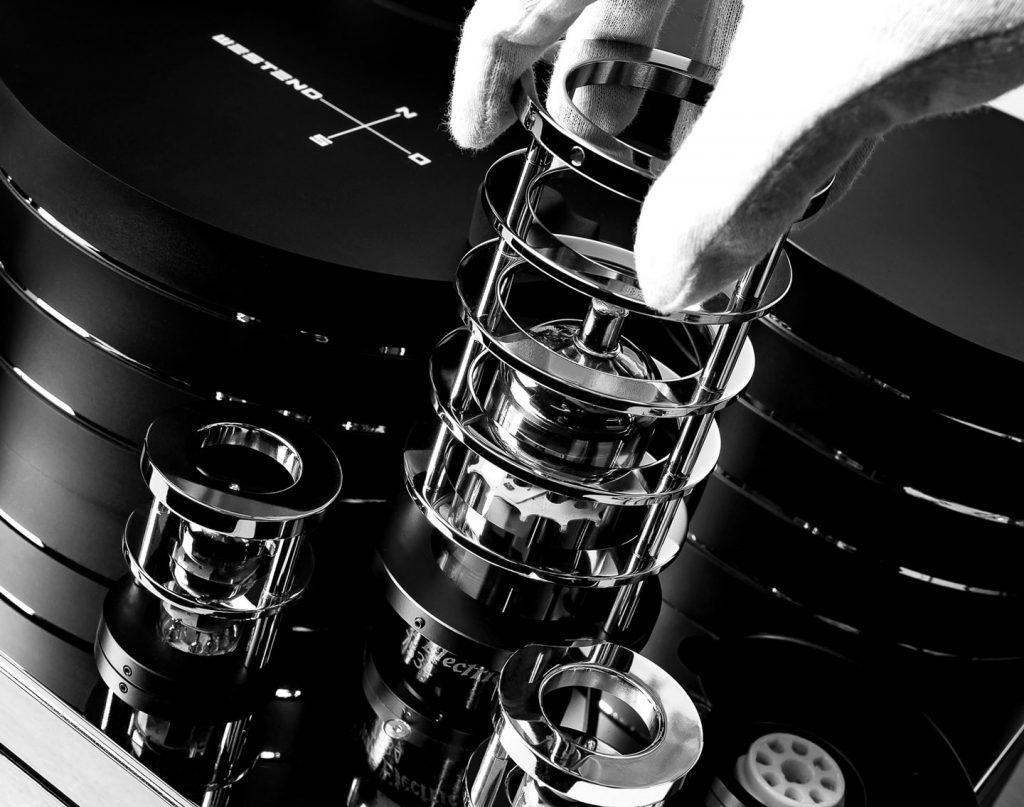
The customizable control by the processor also allows the use of other tube types than the EL 130 – the replacement tubes only have to be of a similar type. Thanks to today’s pleasingly large selection, there is a wonderful field for experimentation. I have tried a whole series of (played in) tube sets on the Monaco. The changeover went absolutely smoothly. In the end, I liked the Western Electric best. But that is purely a matter of taste.
Two ECC 82 preamp tubes per channel provide the basic amplification, Mania: “The preamp tube determines the sound”. The ECC 82 is considered a rather “soft” sounding tube and is therefore often used in tube amplifiers.
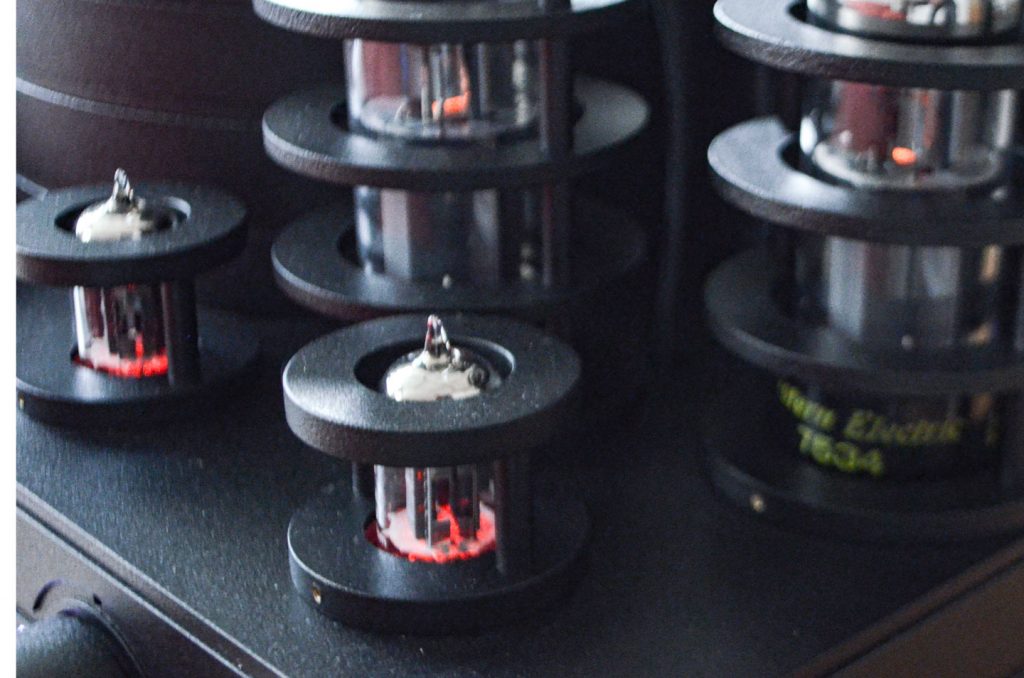
The design of the Monaco is symmetrical throughout. This means that the signal is balanced at the input – including the signal from the unbalanced RCA inputs. The internal voltage is 430 volts. This is not that high for a tube, but the Monaco is of course secured in many ways. “Because if something breaks,” says Mania, “the currents here are pretty high. And the gold backups simply sound the best.”
Some impressions from inside the Monaco:
Practice
Just switching it on is a show. The automatic switch-on function takes 30 seconds to start up and signals this by gradually switching on all LEDs. The Monaco has several of these; the volume level is also indicated by LEDs. After this “preheating”, the tubes are at operating temperature and only now is the signal switched through. The soft start extends the tube life considerably.
In terms of connections, the Westend Audio Monaco remains classically simple: five analog inputs, that’s it. His little brother Leo has both a phono and a Bluetooth input. None of this in Monaco. Mania: “If you want to listen to records at this level of quality, buy a correspondingly good external preamp.”
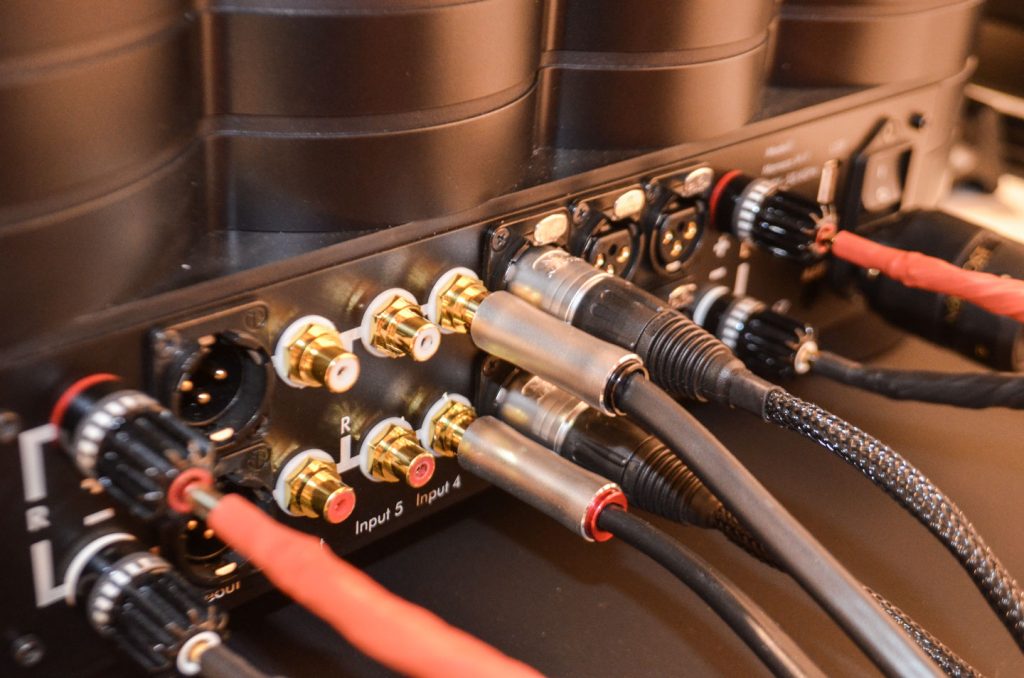
Westend Audio Monaco: handmade in Munich
The electrical components of the Monaco are manufactured in a production facility in Malsch, Baden, while assembly, adjustment and surface finishing take place in Munich – after all, the city was also the inspiration for the name. Here, in Munich’s Westend, everything comes together. And this is also where Trog finds the best suppliers for the metalwork. That is important to him.
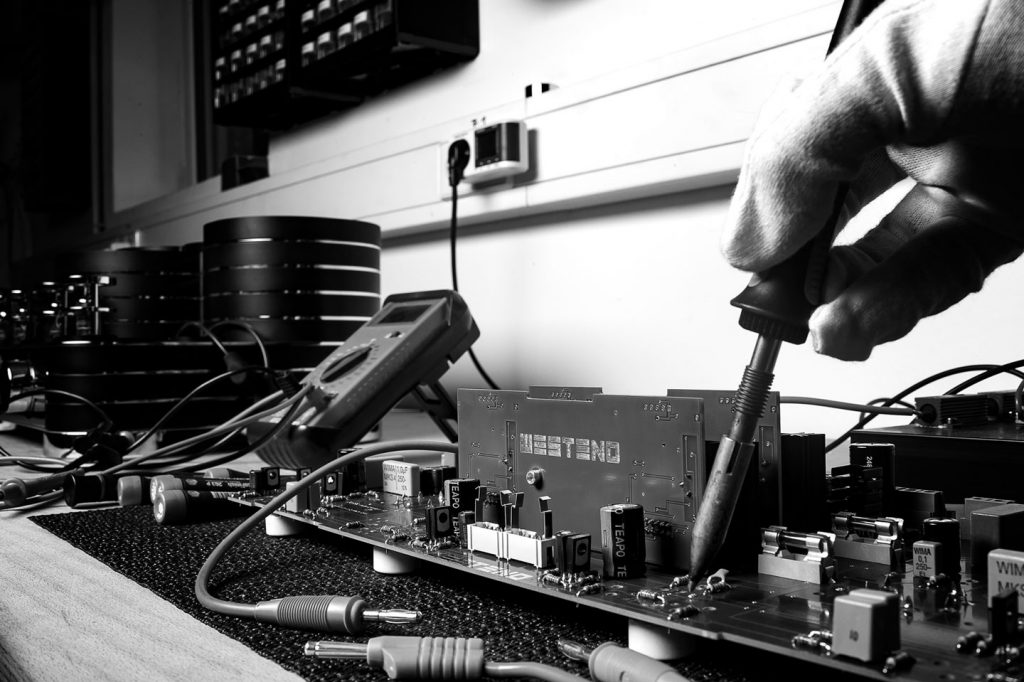
The finish of the Westend Monaco is a dream. The controls respond to every command with a rich click from the gold-plated relays. If you try to lift it, you realize: heavy. Very heavy. The powerhouse weighs in at almost a hundredweight, and this is not only due to the massive transformers and the massive transformer. There is simply a lot of heavy metal involved. The housing walls vary in thickness. This enables the castle-like design.
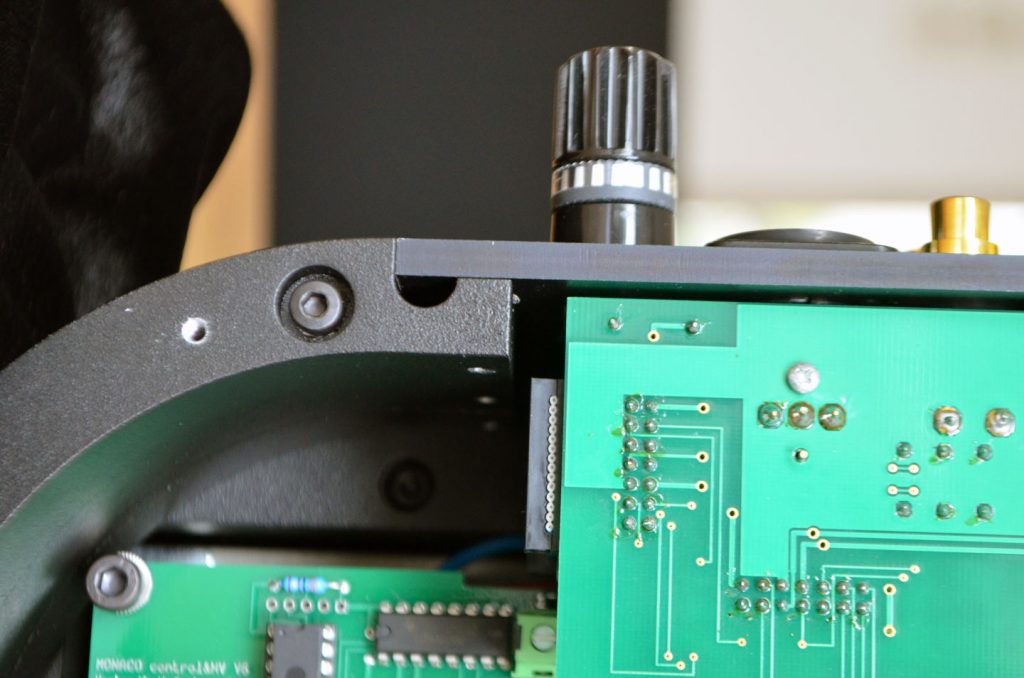
Perhaps the most convincing aspect of the Monaco is its superb surface: completely flat, no gaps anywhere. This is where Westend Audio boss Trog is in his element. He knows the best surface finishers in the region; his standards are high and his enthusiasm for every chic surface is at least as high. To whet your appetite, we’ll just let the pictures do the talking: Here is a small selection of surfaces in the slideshow:
But that’s also one of the advantages of this capital tube amplifier: it’s available in virtually any finish. A week ago, Trog had a version with a matt black powder coating in the store. Wow! The matting of the surface took away some of the power of the whopper…
This is what the Monaco sounds like
The Monaco was in the listening room for many weeks and played against a number of amplifiers. But he usually made short work of them. His incredibly lively and natural way of playing made the Monaco’s sound images appear ever larger and finer. In the end, the most persistent opponents were the smaller 300B tube amplifier Leo, the powerful transistor Atoll IN 400SE and – how could it be otherwise – our longtime tube reference Octave V 80 SE.
Even the little brother Leo we have already been able to attest to its outstanding sound. And if the level remained manageable and the connected speakers were reasonably efficient, the Leo sounds at least on a par. Above all, the enormously transparent mid-range reproduction of the Leo is unique in my opinion. But in the large LowBeats listening room and on loudspeakers with the usual low efficiency – such as the large Canton A 55 – the Leo is quickly overwhelmed.
You need performance. The Atoll has it in abundance, it has a wonderfully uncapricious form of power development and an equally natural, very smooth reproduction. But the Monaco is more playful, more lively. The entire mid-high range really sparkles. It also opens up the room considerably. Here the tube imposes its character on the sound. It sounds, you could say, more transparent and more splendid.
A lack of performance was never a problem with the Munich native either. We have tested the Monaco ourselves on watt vacuum cleaners such as the TAD Compact Evolution. Alf would say “no problem”. Up to a very high level, the Monaco also let the critical but incredibly fascinating TAD shine.
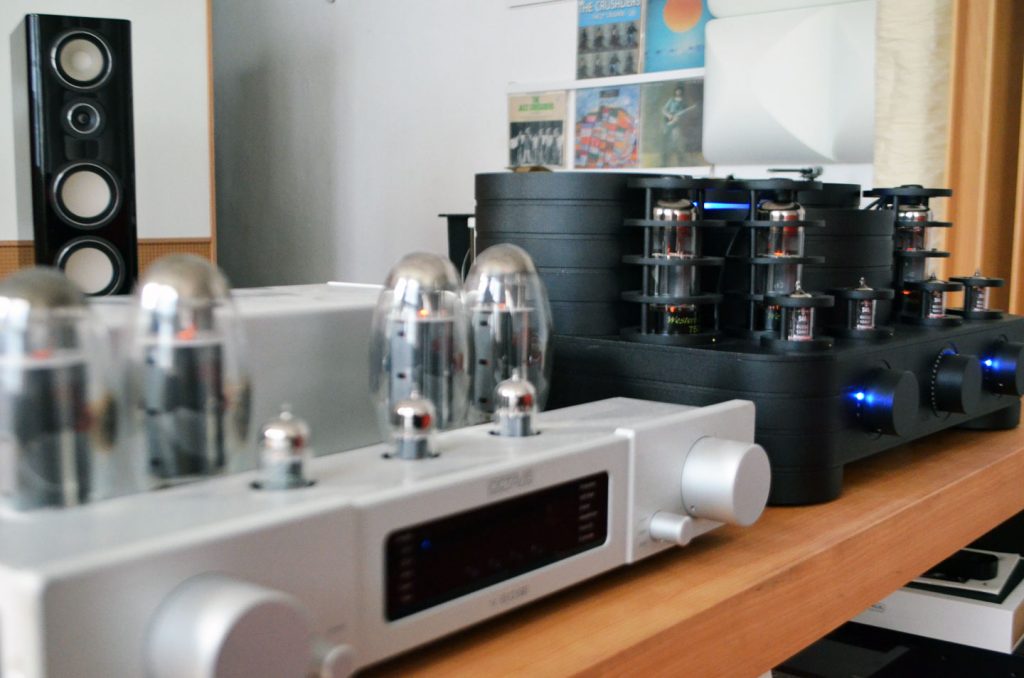
The Octave also manages this. The long-standing LowBeats reference can push an incredible board from below. It was a thrilling race, but in the end the Monaco won by some margin. Bass drums or low-frequency electro beats get a new dimension with the V 80 SE gives them a richness and structure that is a real joy. At the bottom, the Monaco has a little less emphasis. The rich bass drum hits don’t come with the same brute force. But overall it is the livelier, more open amplifier. Voices come across a little more freely, guitar overtones have a little more “air”. You simply hear a bit more: even more details, more timbres. The Munich native manages the feat of sounding more elegant and informative at the same time. Just like the Octave the Westend Audio Monaco does not want to fulfill the cliché of the usual warm and soft tube sound.
They also show impressive stability in the bass and in the fundamental tone, which characterizes both. But the Monaco just plays a little more openly and authentically.
For a while, we had the really fascinating Arrivato from BetonArt (soon to be tested) visiting the editorial team. This floorstanding speaker with its extreme cast concrete cabinet shows most other speakers with wooden cabinets how clean, impulsive and expressive the fundamental tone can sound. On the Monaco, the Arrivato opened up the full depth of the shot. The combination conjured up a three-dimensionality in the listening room that made you gulp: Because it sounded so precise, so tangible, so authentic. A comparison with the big transistor behemoths like the Gryphon 300, Mark Levinson 585 or Hegel 590 the Monaco need not fear comparison.
His combination of power and finesse allows him to shine even in the small world elite. And this also explains why the great Westend Audio will not be leaving the editorial office any time soon: it is the new LowBeats reference.
Conclusion
The Westend Audio Monaco is a statement: heavy, eye-catching and not at all cheap. But it is an integrated tube amplifier that is as reliable and powerful as a transistor, whose characterful sound experience is close to perfection, which has a finish that not only delights connoisseurs and which can be perfectly adapted to the furnishings of the living room/listening room with a variety of the finest finishes. Many hi-fi fans are looking for their “final” amplifier. The Westend Audio Monaco has what it takes.
Rating
Sound QualityUsabilityBuild QualitySummary |
| The rating always refers to the respective price category. |
| | Outstandingly lively and natural sound |
| | High precision, very good control |
| | 2 x 100 watts and stability up to 2 ohms |
| | Outstanding workmanship, wide variety of surfaces |
Distribution:
Westend Audio Systems
Siegenburgerstr. 10
81373 Munich
www.westendaudiosystems.de
Price (manufacturer’s recommendation):
Westend Audio Monaco: from 20,000 euros
Teammates and opponents in the test:
Test Octave V 80 SE: the reference integrated amplifier
Test Westend Audio Leo: 300B tube amp with 2 x 20 watts
Test Atoll IN 400 SE: best integrated amplifier under 5,000 euros?
Canton Anniversary family test: A 55, A 45, A 35 and 45BS





